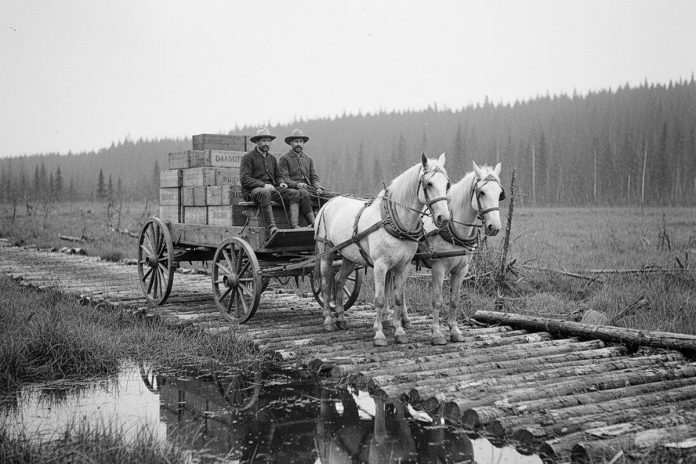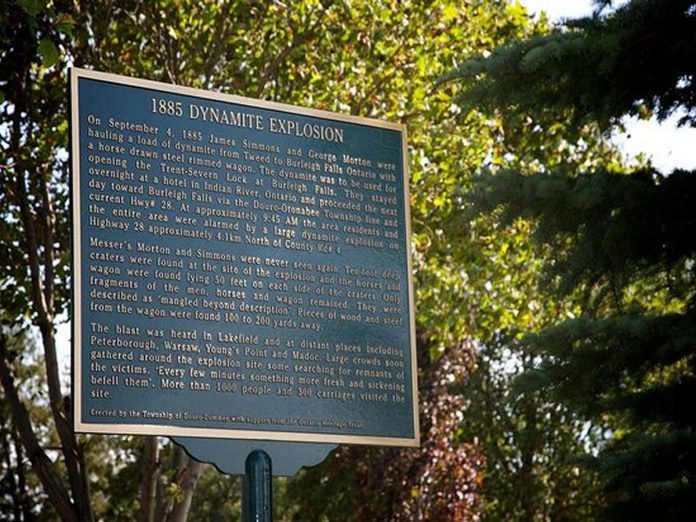
This Thursday (September 4) marks the 140th anniversary of the Douro dynamite explosion in Peterborough County.
On Friday, September 4, 1885 at around 9:45 a.m., a wagon carrying a load of dynamite exploded, with the blast reportedly felt 80 kilometres away.
Two men from Tweed, George Morton and James Simmons, were killed in the explosion along with their horses.
According to reports at the time, Morton and Simmons were transporting 20 hundred-pound boxes of dynamite in a steel-rimmed wagon along the 6th Line of Douro (now Highway 28), 4.1 kilometres north of what is now County Road 4.
After spending the night in Indian River, the two men set off Friday morning for their destination in Burleigh Falls, where the dynamite was going to be used for blasting granite rock during the construction of Lock 28 on the Trent-Severn Waterway.
At around 9:45 a.m., an explosion rocked Lakefield to the north, where windows were blown in. The blast was felt in Norwood, Warsaw, and Young’s Point and heard as far away as Hastings, Campbellford, and Madoc.

While the cause of the explosion remains unknown, the wagon was travelling along a corduroy road consisting of logs laid side by side through what was a swamp.
Although fresh dynamite is stable, dynamite that has been improperly stored or exposed to water for long periods can leak nitroglycerine, which is extremely unstable and subject to spontaneous explosion.
One report claimed the men were also transporting eight one-gallon cans of nitroglycerine in the wagon.
The explosion created a crater that was eight to 10 feet deep and 70 feet wide, with trees levelled for 50 to 75 yards. Only remnants of the two men, their horses, and the wagon were found, up to 100 to 200 yards away from the site of the explosion.
It was estimated that 1,100 people and 300 carriages visited the site on the Sunday afternoon following the explosion.
On November 22, 2006, the Township of Douro-Dummer and the Ontario Heritage Trust erected a plaque at the Douro community centre describing the explosion.


























